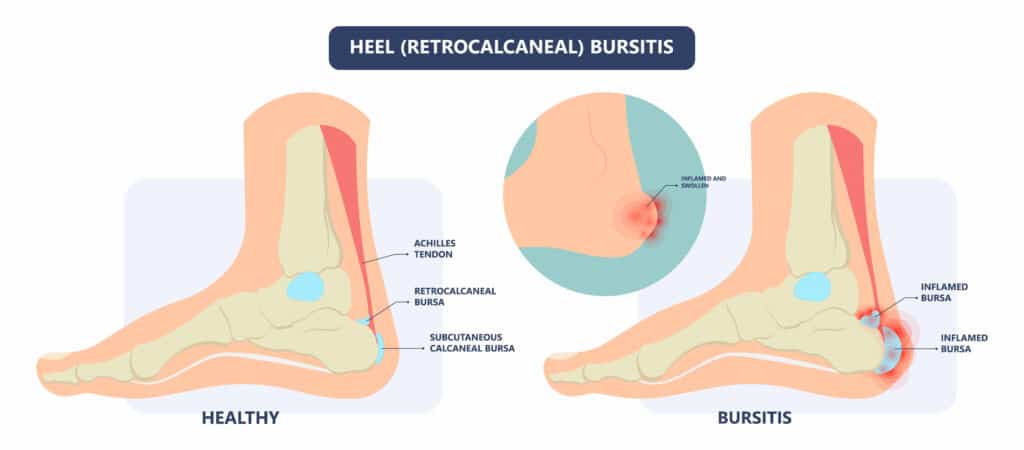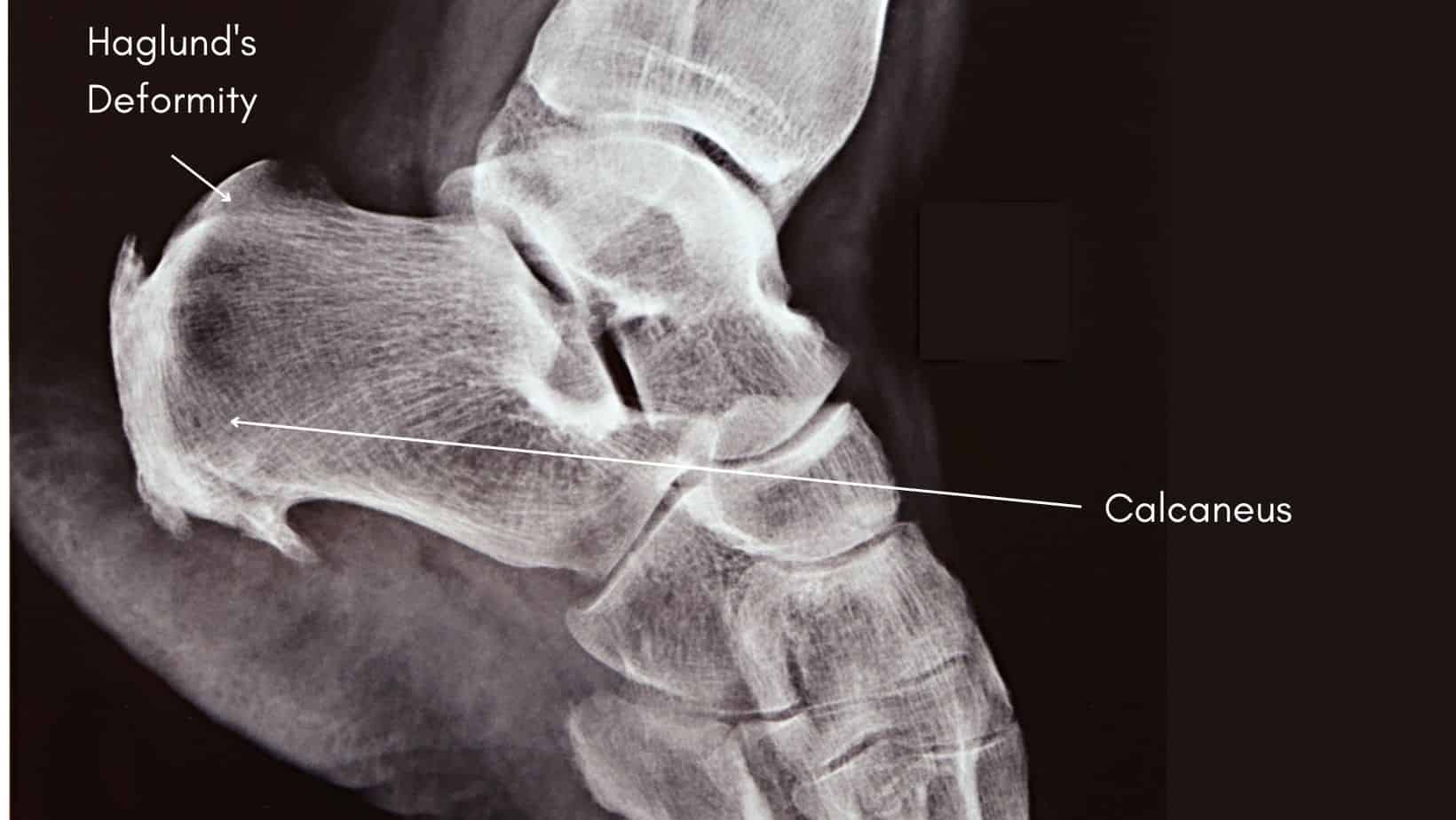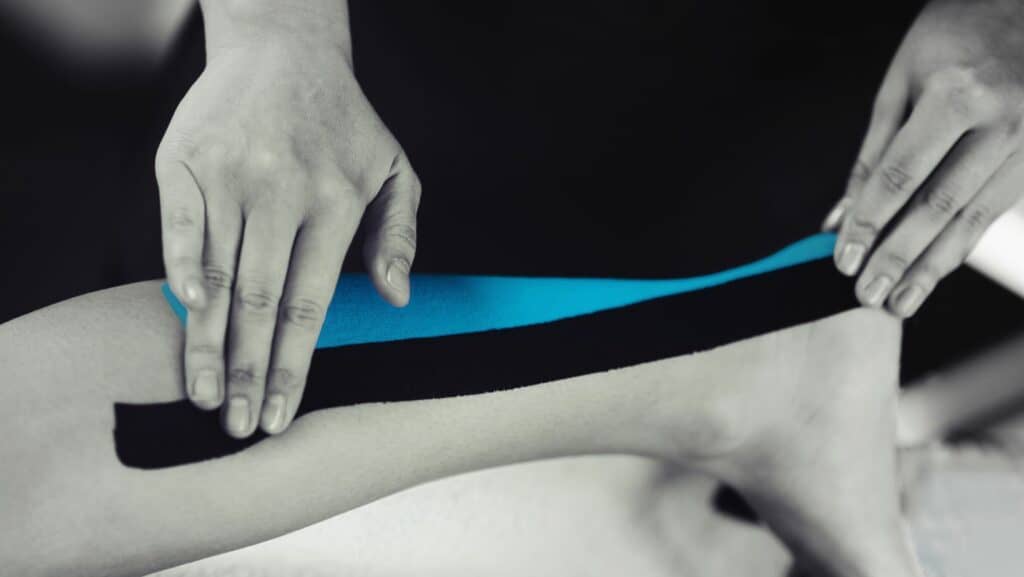Haglund’s Deformity Exercises
Read More >
The retrocalcaneal bursa sits on the back of the heel bone between the calcaneus bone and the Achilles Tendon. A bursa is a fluid-filled sac whose primary function is to act as a cushion between the tendon and the bone. When inflamed, the retrocalcaneal bursa can become painful and is known as Retrocalcaneal Bursitis.
The symptoms of Retrocalcaneal Bursitis include localised swelling at the back of the heel bone that can be exquisitely tender to touch or too painful to place inside a shoe.
It is painful to walk upstairs, walk up a hill or to lift the foot into dorsiflexion while the patient reports feeling a burning sensation on the back of the ankle.

Retrocalcaneal Bursitis is primarily caused by repetitive or sudden overuse of the Achilles Tendon through activities such as walking uphill, running or jumping.
In some cases, tight shoes can compress the bursa, causing it to inflame, while blunt trauma, such as a kick to the heel while playing sport, irritates it.
You are more likely to develop Retrocalcaneal Bursitis if you have a Haglund deformity or if you are over the age of 65.

A Physician or Physical Therapist can diagnose Retrocalcaneal Bursitis through a clinical assessment.
If they are uncertain of the diagnosis, you may be referred for an Ultrasound scan or an MRI to identify swelling within the Retrocalcaneal Bursa.
An x-ray helps identify a Haglund’s deformity but cannot be used to diagnose Retrocalcaneal Bursitis.
In acute episodes of Retrocalcaneal Bursitis, home treatment is effective at resolving the issue. We recommend the following:
Following a Physical examination, a therapist can identify any muscular imbalances or an overload to the Achilles Tendon that may contribute to your pain.
Alongside home treatment methods, stretching and isometric strengthening exercises are beneficial for reducing pain levels and addressing the causes.
Massage to the calf muscle can relieve symptoms, but therapists should avoid massaging directly over an inflamed bursa.
If you are keen on running or training for an event, discussing your training plan with your Physical Therapist to create a suitable return-to-play plan is essential.
Advise on footwear and insoles is beneficial. Running shoes with a high heel drop can offload the Retrocalcaneal Bursa and the Achilles tendon, or a simple shoe insert with a heel raise can provide effective results.
Retrocalcaneal Bursitis taping is usually carried out using KT Tape. The patient lies on their front (prone) and holds their foot in dorsiflexion.
KT Tape is attached to the underside of the calcaneus and stretched up and over the Achilles Tendon. The second piece of KT Tape is placed horizontally over the Retrocalcaneal Bursa.
Some patients find Retrocalcaneal Bursitis taping relieves pain, but little evidence supports its use.

In a minority of cases that do not settle with Physical Therapy, an ultrasound-guided corticosteroid injection may be required. The purpose of the injection is to reduce the inflammation levels in the bursa that are causing most of the pain. There are some risks of infection associated with an injection, so these should be discussed with your Physician before any treatment. A period of 1-2 weeks in a walker boot may be recommended.
If you have mild to moderate symptoms of Retrocalcaneal Bursitis, you can continue to run as pain allows. Stop if your pain gradually increases during your run, and apply our home treatment recommendations afterwards.
Choosing running shoes with a high heel drop (Insertional Achilles Tendonitis Shoes work well) can help with the symptoms of retrocalcaneal bursitis when running. If you have severe symptoms when running, we recommend you stop and consult a medical professional such as a Physical Therapist.
This article is written by James McCormack, a Lower Limb Specialist who is an expert in treating ankle bursitis.
This is not medical advice. We recommend a consultation with a medical professional such as James McCormack if you are experiencing any of the symptoms discussed in this article. James offers Online Physiotherapy Appointments weekly and face-to-face appointments in his London clinic.